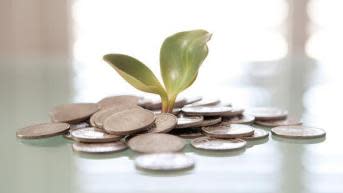How to Build an Ideal Retirement Portfolio

The ideal retirement portfolio should have the following traits: it generates the income that you need and it consists of quality assets that you?re comfortable holding.
In terms of a retirement stock portfolio, the sooner you start building it (ideally, decades before your retirement), the better.
Why is that?
Quality businesses tend to become more profitable over time. So, under normal market conditions, the earlier you buy shares of these businesses, the less you pay for its future earnings.
It gets better if you buy quality dividend stocks because retirees look forward to generating income from their portfolios. With a diversified portfolio of quality dividend stocks which generate sufficient income for your needs, you won?t need to worry about spending your capital and running out of money.

Quality dividend stock example
Imagine you?d bought $10,000 worth of shares of Toronto-Dominion Bank (TSX:TD)(NYSE:TD) in 2003 at a stock-split adjusted price of $20.50 per share.
At the time, the shares weren?t particularly cheap, trading at a price-to-earnings ratio of 13.
However, fast forward to today, after 13 years of long-term earnings growth, your investment would have appreciated 3.3 times.
All the while, you?ve also been receiving a dividend that tends to grow each year. In fact, by now, you would have received 88% of your investment back in dividends alone!
The benefits of buying early
If your retirement portfolio consists of quality stocks that you bought a long time ago, the cost basis of your investments should be much lower than the market price when you retire. These capital gains add a big cushion to preserve your capital in an event of a market crash.
Moreover, if you save and invest consistently, you can choose the best-valued quality stock to invest at the time. Doing so will help reduce your overall risk because you?re aiming to buy at a margin of safety and will boost your returns and yield.
The sooner you buy dividend stocks, the sooner you start earning dividends. You can then use the dividends you receive to invest for more dividends.
Investor takeaway
The ideal retirement portfolio should generate sufficient income for your income needs. By saving and investing consistently and building a diversified portfolio of quality dividend stocks early on, you can achieve that.
Simply start replacing your regular bills with dividend payments. For instance, buying 25 shares of TD Bank for about $1,730 today will generate $55 of income per year based on its current payout. However, you can expect that income to grow over time as the bank increases its dividend.
How to Find Great Dividend Stocks
Over a nearly 30-year period, dividend-paying stocks earned about 18X more than their non-dividend counterparts!
Yet incredibly, it's only one part of the story.
To find out how these same stocks had 45% less volatility (and how you can try to take advantage!), click here to read this exhaustive report.
More reading
TFSA Investors: 2 Dividend-Growth Stocks to Help You Save Some Serious Cash
Is Toronto-Dominion Bank the Right Stock for Your Portfolio?
Fool contributor Kay Ng has no position in any stocks mentioned.
How to Find Great Dividend Stocks
Over a nearly 30-year period, dividend-paying stocks earned about 18X more than their non-dividend counterparts!
Yet incredibly, it's only one part of the story.
To find out how these same stocks had 45% less volatility (and how you can try to take advantage!), click here to read this exhaustive report.
Fool contributor Kay Ng has no position in any stocks mentioned.

 Yahoo Finance
Yahoo Finance 